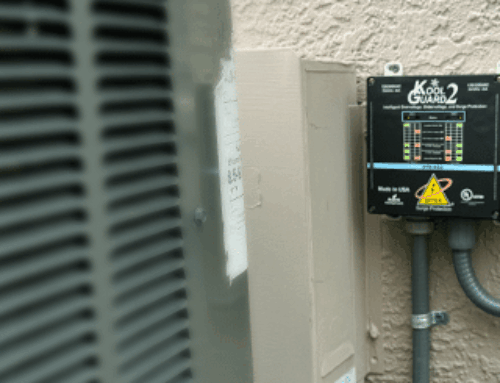For proper operation, install all Surge Protective Devices (SPDs) per the guidelines set forth by the manufacturer. Improperly installed devices will not perform as intended and consequently, will not protect the equipment.
The conductor length between the SPD and the protected equipment should be a minimum of three feet in length to allow enough time for it to react. The conductors can be greater than 3 feet as long as they are isolated and are not subjected, or directly exposed to internally or externally-generated, transient voltage spikes and/or surges.
Always make sure that the field wiring (unprotected wires) and the protected wiring occupy separate conduit feeds. When unprotected and protected wires occupy the same conduit, surge energy can be induced on to the protected wiring and completely bypass the Surge Protective Device (SPD).
The use of a grounding bus bar is strongly recommended as a means of terminating SPD ground wires to existing electrical grounding leads. This will ensure a solid mechanical connection of all grounding wires. Twist-on wire connectors, also known as wire nuts, are not recommended for terminating SPD ground wires. They can add resistance by becoming loose and/or corroded over time. In addition, twist-on wire connectors can unnecessarily extend the length of the grounding conductor. This would degrade the performance of the SPD due to the lack of a short, low impedance ground path.
When installing multiple SPD’s and terminating to a common ground, a dedicated ground wire ran from each individual SPD to a common grounding bus bar is strongly recommended. “Daisy-chaining” multiple SPD ground wires together via the SPD grounding terminals or by using twist-on wire connectors is not recommended as this increases the resistance and extends the length of the ground path. If the desired grounding/bonding point is a greater distance than the lead wires from the surge protector to the protected equipment, use a larger gage grounding conductor (#6 AWG) from the grounding buss to the desired grounding/bonding point.
Make sure that the grounding conductors are short and straight where possible. Look for a low impedance ground source. While NEC states 25 Ohms or less, IEEE and DITEK require less than 5 Ohms. This will give the surge energy a low impedance dissipation point to shunt the overvoltage energy to, and away from your protected circuit.
For referencing ground, you can look to an Electrical Service Ground, Grounded Building Steel, Local Electrical Ground or a Dedicated Ground Rod. Do not reference metallic water pipes. Typically, PVC is used when repairing or replacing pipes. Since PVC is non-conductive, ground reference will be lost.
To learn more about grounding and bonding, read our white paper Grounding 101.





